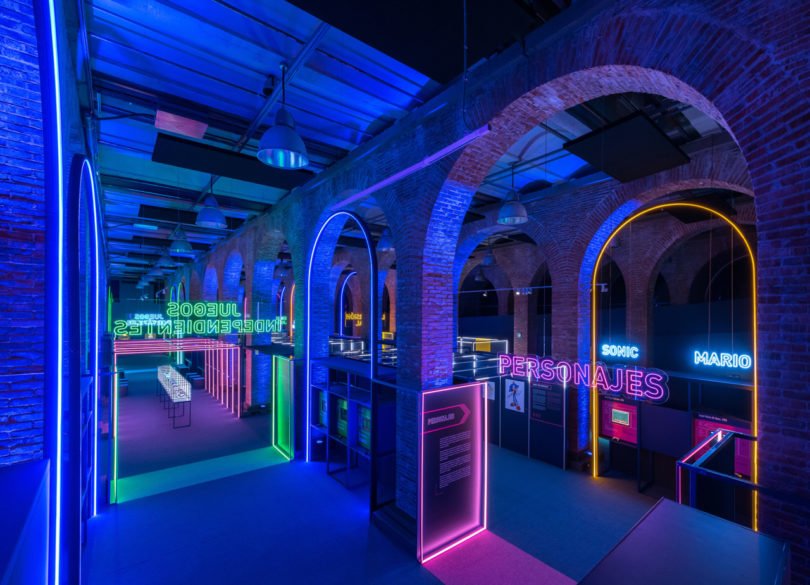
Organised by the Fundación Canal and Barbican International, the design project was tasked to eco-focused Smart & Green Design and coordinated by Fernando Muñoz, architect from the Higher Technical School of Architecture of Madrid (ETSAM).
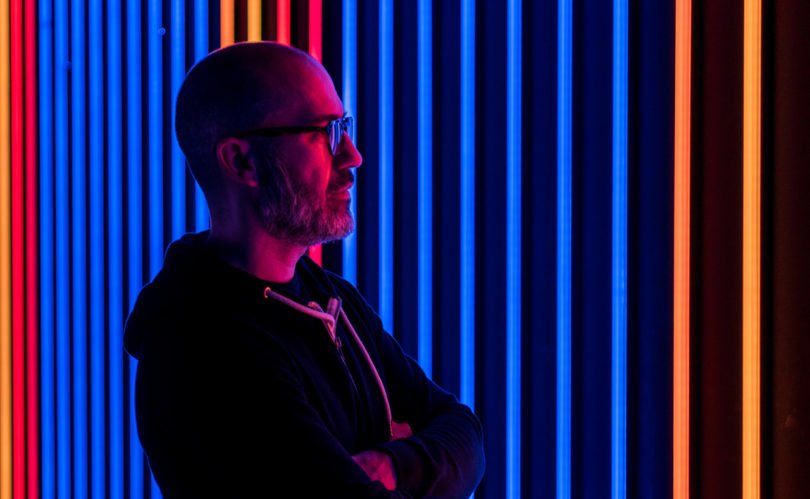
Game On was realized to become the world’s largest exhibition dedicated to video games, spanning the history of gaming from 1972 to the present. The results are a luminescent celebration of gaming’s imprint upon culture – one part Flynn’s Arcade from the original TRON, one part Missy Elliott video circa “Work It” – all contained within a museography guided by the values of sustainability and environmental impact.
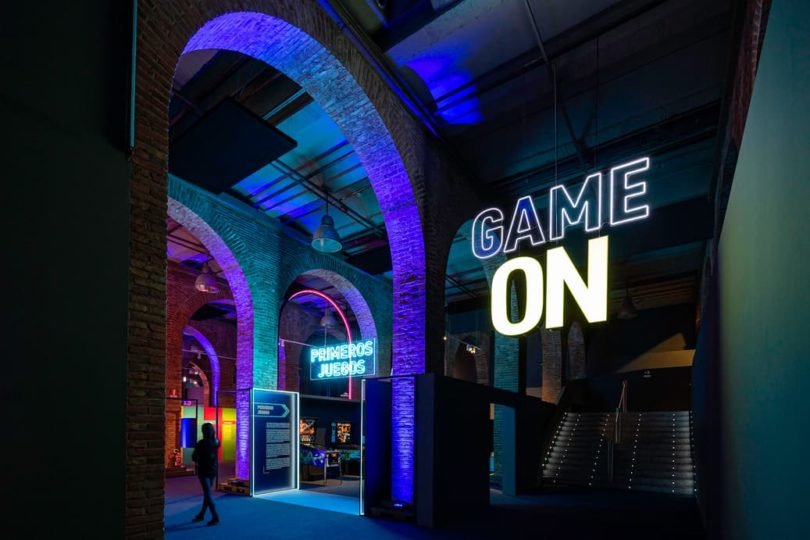
From its first vector-based digital iterations till its final real world construction, Game On was imagined to offer visitors a holistic overview of the artistic, aesthetic, and historic context of gaming’s imprint across the decades. With 500 original pieces, including 150 playable titles, visitors are invited to first learn and then play games which stands as hallmarks of the medium, all within a space imagined as an ode to gaming’s past architectural stage, the arcade – an exhibition “where you can look and play”.

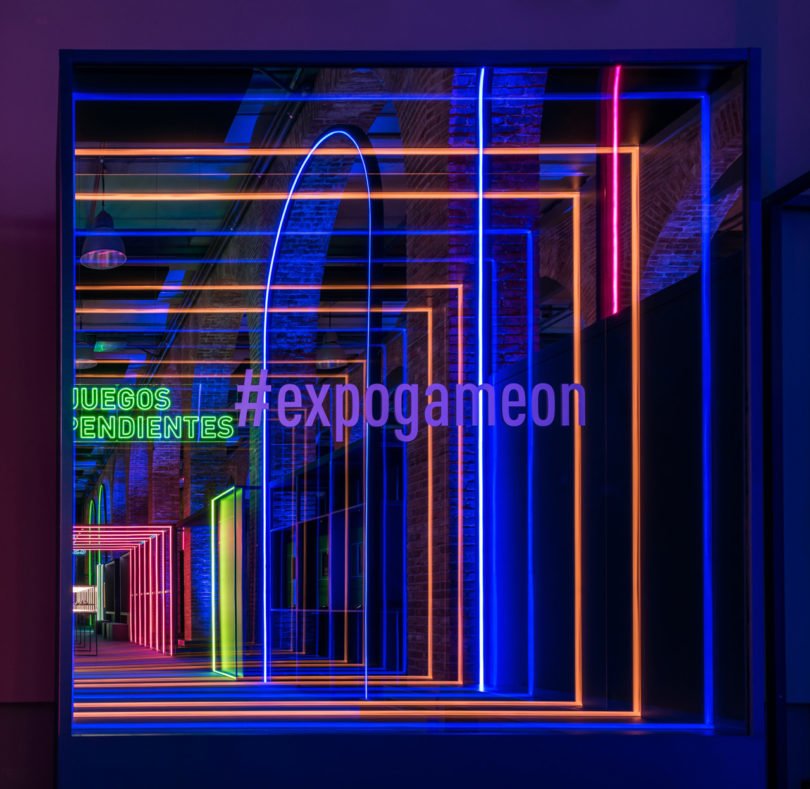
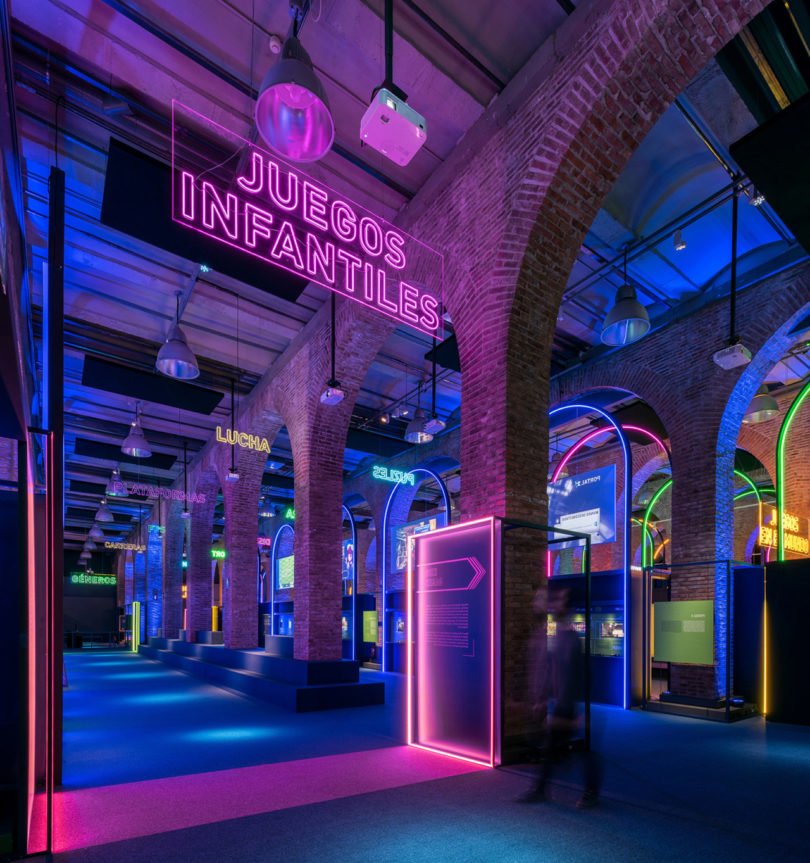
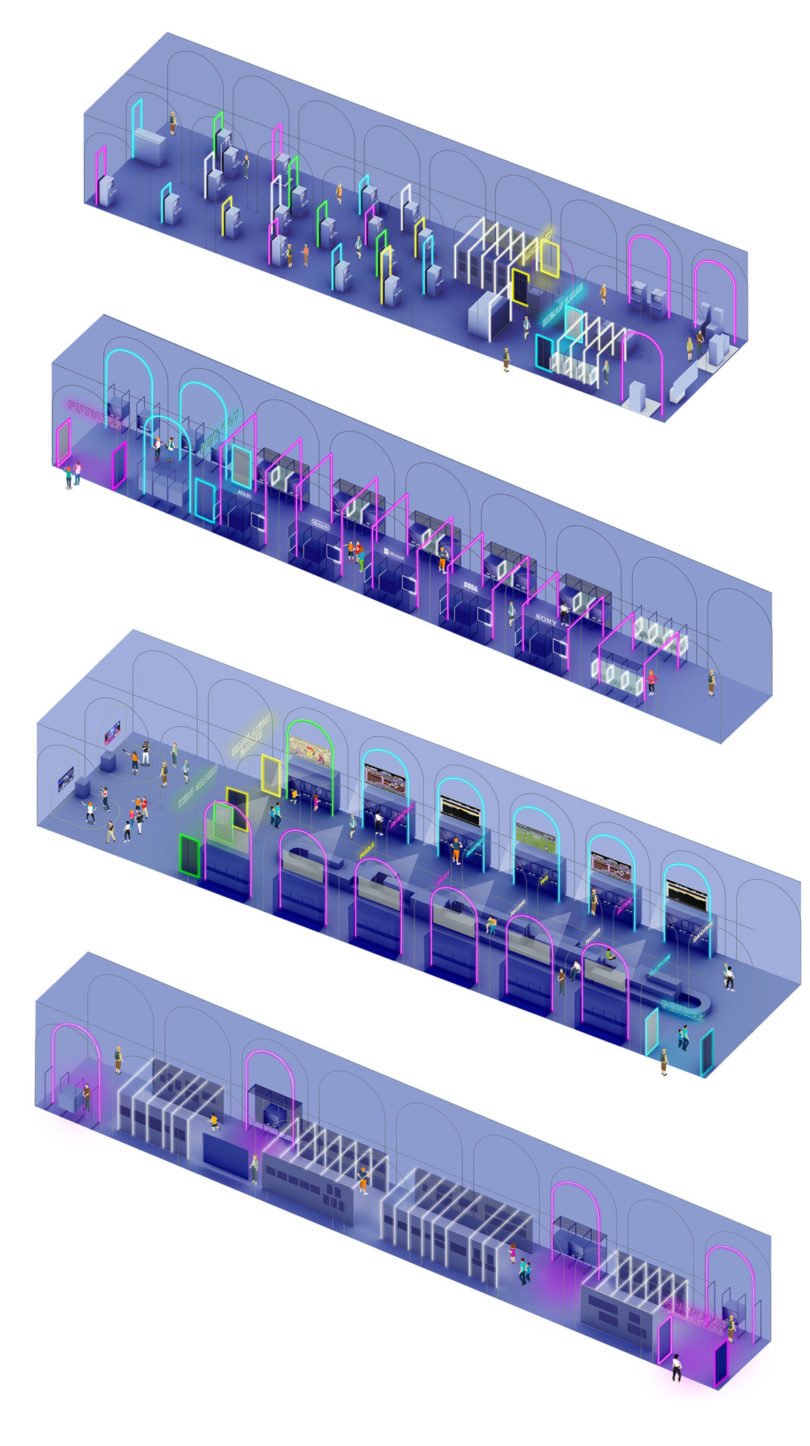
Designers at Smart & Green minimized the use of raw materials, committing to integrating lightweight, modular systems with standardized dimensions. These mobile pieces quickened construction while also reducing excess waste, with every piece selected for their highly environmentally friendly characteristics.
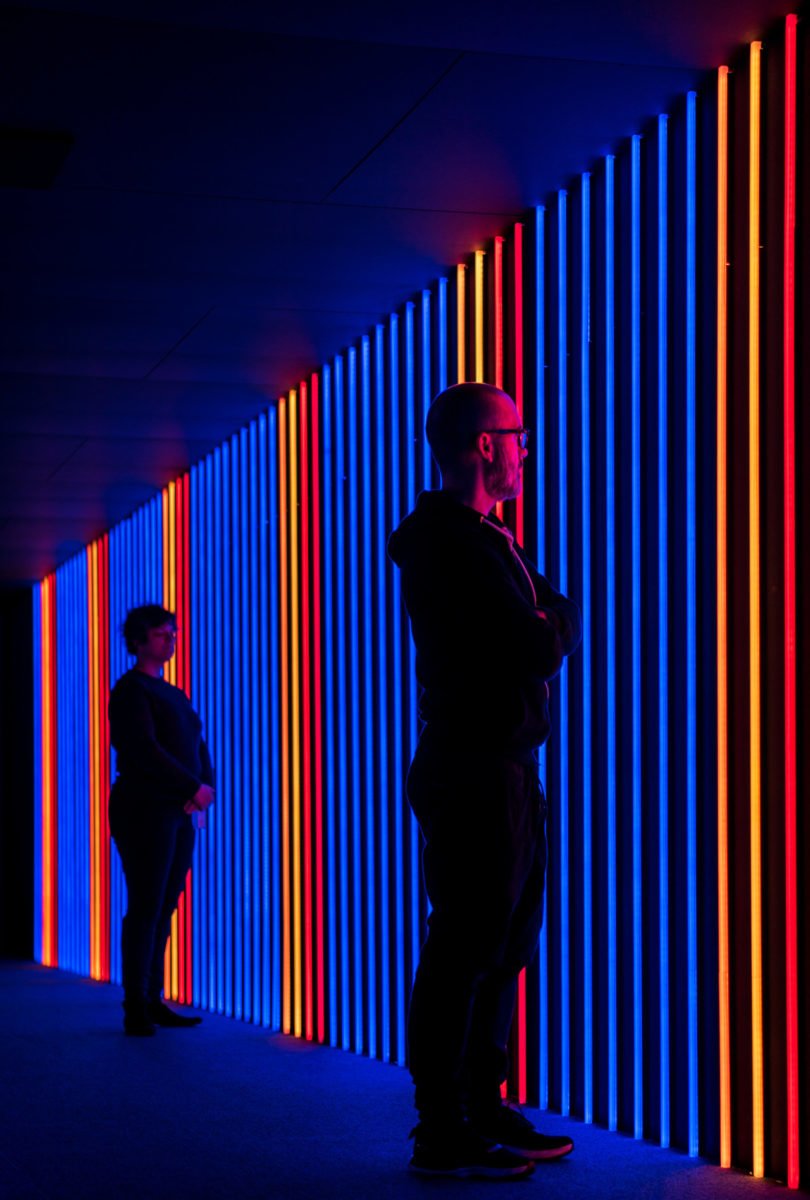
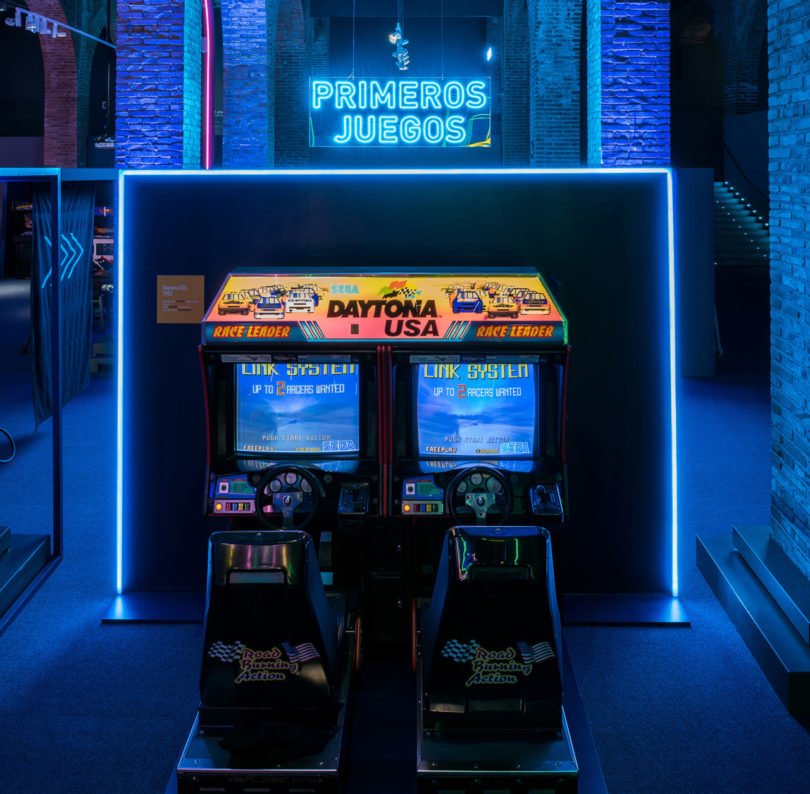
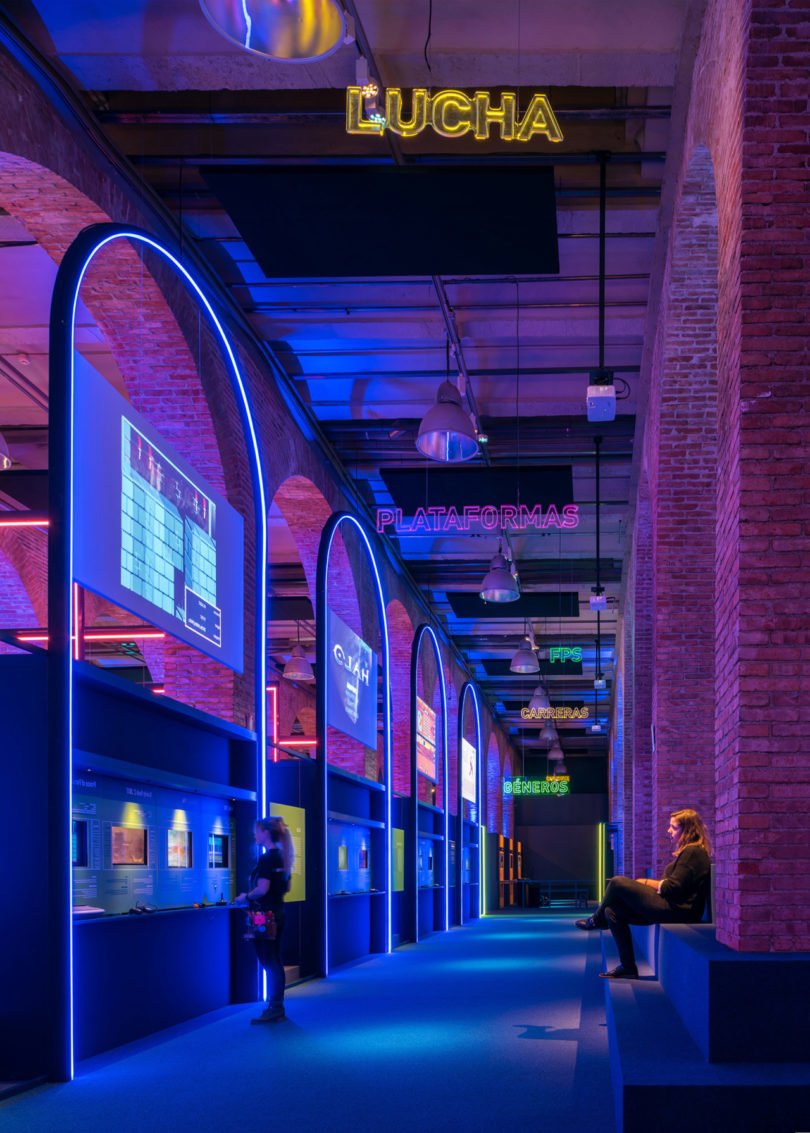
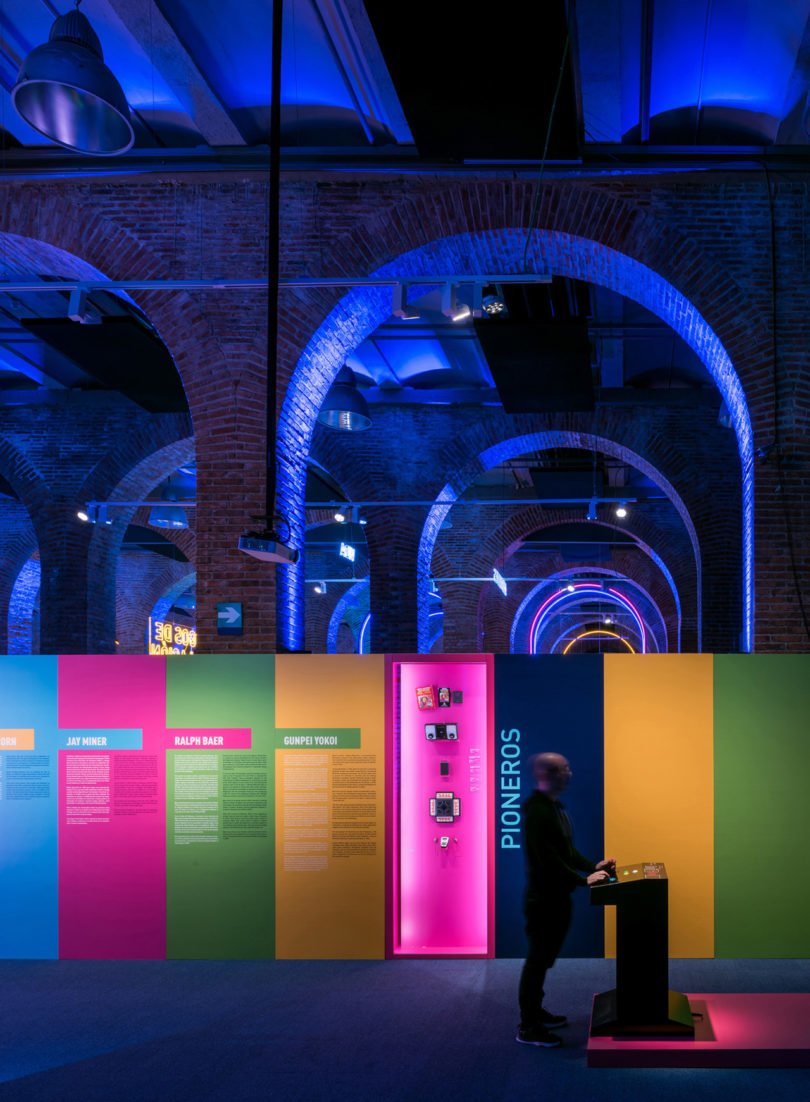

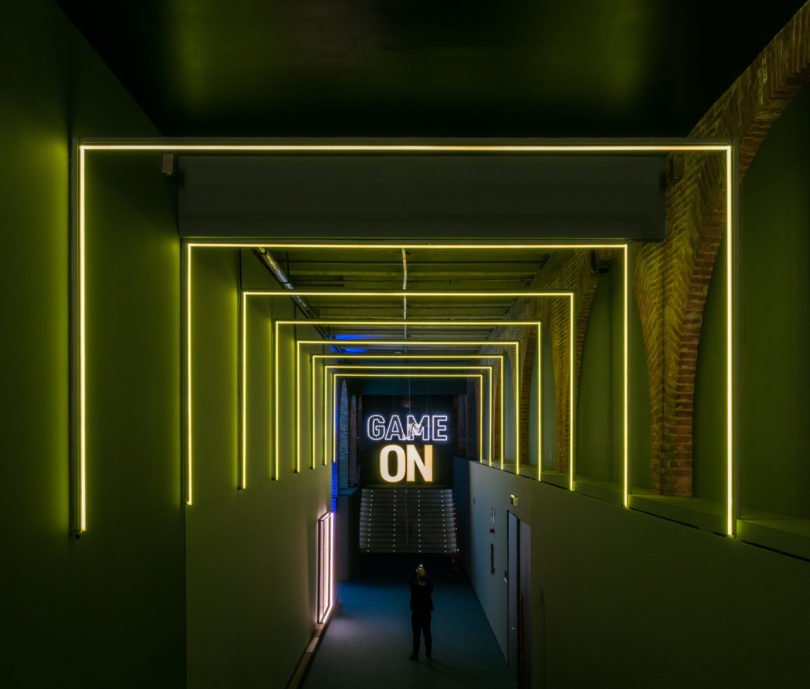
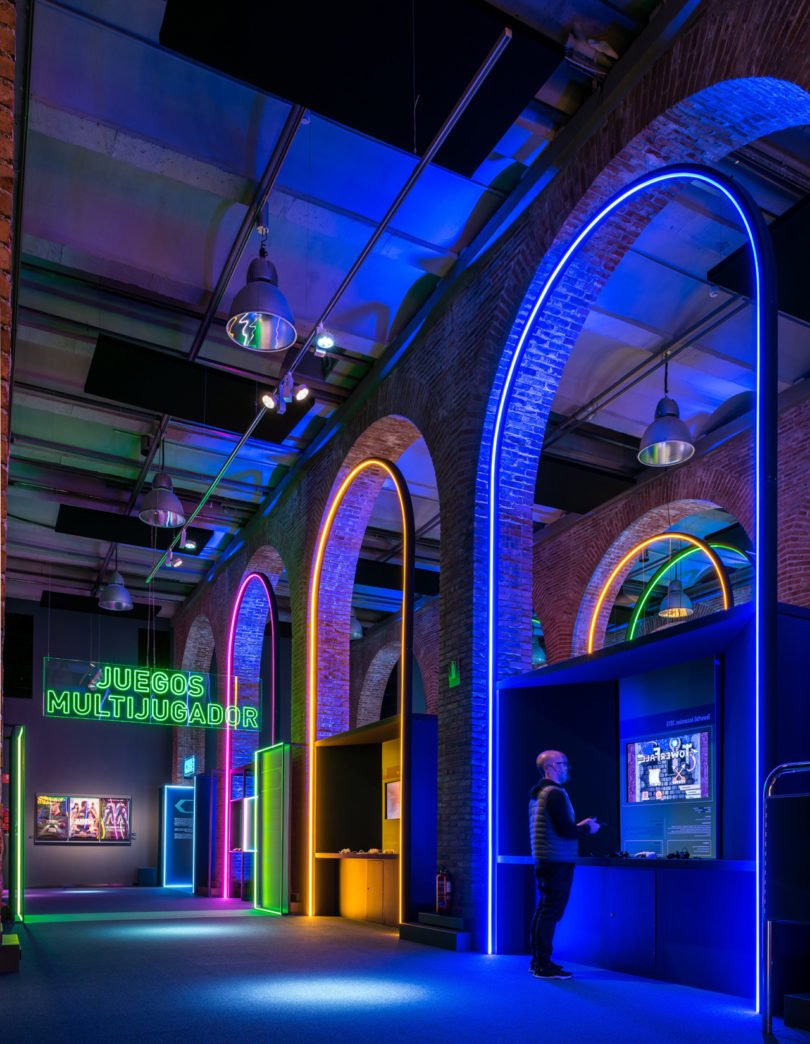
Sadly, like many exhibitions and events around the globe, COVID-19 concerns forced the exhibition curated by Barbican International Enterprises and organized by Fundación Canal to close prematurely. Let’s hope Game On is one day revived again to offer the “Press Any Button to Continue” of museum experiences again.



![A Tranquil Jungle House That Incorporates Japanese Ethos [Video]](https://asean2.ainewslabs.com/images/22/08/b-2ennetkmmnn_t.jpg)









